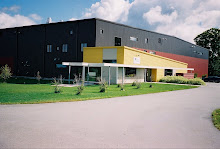It’s time for a food revolution!
I eat a healthy diet of fruit, vegetables, locally-raised meats and whole grains . . . sometimes. But you know, when I smell those hot crispy french fries or that warm gooey chocolate chip cookie it is almost impossible not to eat just one, and then it’s impossible to eat just one. There are actually scientific theories about why this happens, and how foods are “designed” to make this happen. A
new book by
Dr. David Kessler, former Commissioner of the federal Food and Drug Administration, lays out what happens to our brains when we smell those cookies. The smell, sight or thought of fat, salt and sugar-laden foods triggers brain chemicals that create a path to our reward centers. The signal doesn’t turn off until the cookies or fries are gone. Does this description trigger a familiar feeling in you? It sure does to me.
People without enough food to eat are just as susceptible to these biological forces, and just as inundated by the ubiquitous marketing and advertising telling us all that these foods will make us feel good, make us more popular and help us have fun. These high fat, salt and sugar foods, which often lack any real nutritional value, are what you find in the convenience stores and corner bodegas in low income neighborhoods across the country. These so-called “food deserts” also lack reasonable access to fresh fruits and vegetable, lean meat and whole grains. What we end up with is the puzzling situation of hungry, undernourished and obese citizens.
Our government spends hundreds of millions of dollars every year enabling a food system that is literally making us sick. For example, overproduction of corn and wheat as the result of national agricultural policy leads to extreme efforts to use it all – enter high-fructose corn syrup, modified food starch, xanthan gum, citric acid (which can be produced from corn), modified corn starch, natural flavoring, and on and on. Even the canned goods supplied to food banks nationwide by the USDA through various programs are layered with sugars and salt.
It is time to say “enough.” A start would be for the federal government to reduce or eliminate the salt and sugar used in processing the commodities distributed through various programs to schools and food banks. Yes it will taste different, but people can add their own salt and sugar if they wish. You can’t take it out if it’s already in.
Building a movement takes time and focus and hope. This one has already begun, and is building in scope and intensity. I expect it will take at least 20 years for real change to happen, but each small step takes us that much closer.
 Have you ever heard of wordle? Wordle is an online tool used to generate "world clouds" from text that you provide. The clouds give greater prominence to words that appear more frequently in the source text.
Have you ever heard of wordle? Wordle is an online tool used to generate "world clouds" from text that you provide. The clouds give greater prominence to words that appear more frequently in the source text.


